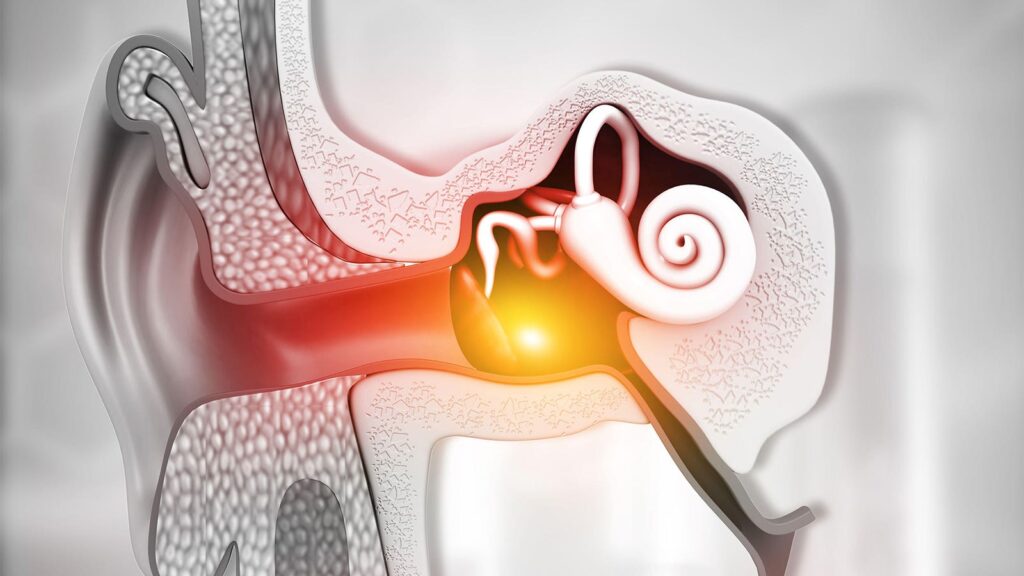- Hearing loss was linked with higher Parkinson’s disease risk.
- Severity of hearing loss was tied to incident Parkinson’s in a dose-dependent way.
- Early interventions with hearing aids reduced Parkinson’s risk.
Hearing loss was linked with a higher risk of developing Parkinson’s disease later in life, medical records from 3.6 million U.S. military veterans showed.
Over an average of 7.6 years of follow-up, hearing loss was tied to incident Parkinson’s in a dose-dependent manner, after adjusting for competing risk of death, age, head trauma, frailty, and established prodromal disorders, reported Lee Neilson, MD, of Oregon Health & Science University in Portland, and co-authors.
Ten years after a baseline audiogram, hearing loss of any severity was associated with an increased risk of Parkinson’s disease compared with normal hearing (HR 1.26, 95% CI 1.2-1.32, P<0.001), they wrote in JAMA Neurology.
Compared with normal hearing, there were 6.1 extra cases of incident Parkinson’s disease in people with mild hearing loss, 15.8 with moderate hearing loss, 16.2 with moderate-to-severe hearing loss, and 12.1 with severe-to-profound hearing loss at 10 years.
When hearing aids were dispensed within 2 years after an initial audiogram, incident Parkinson’s decreased by 21.6 cases at 10 years.
The findings add to growing evidence linking hearing loss with neurodegeneration. In 2023, the ACHIEVE trial showed that hearing aids slowed the progression of dementia in at-risk individuals.
“Parkinson’s disease is a growing problem without a cure. A common reason cited for failure in trials evaluating disease-modifying therapies is that they are applied too late,” Neilson told MedPage Today.
“We know about many risk factors already, including other sensory impairments such as color vision and anosmia,” he said. “Unlike anosmia, hearing loss can be ameliorated.”
Research in primary care has pointed to hearing loss as a potential Parkinson’s risk factor. Health insurance claims data also have suggested a link between hearing impairment and a subsequent Parkinson’s diagnosis.
The risk of developing Parkinson’s disease after objective hearing loss is unknown, Neilson noted. “We took advantage of the unique medical record system at the Department of Veterans Affairs to try to answer this question. Almost every veteran who had a hearing test was examined,” he said.
The study analyzed health records of veterans who had an audiogram from 1999 through 2022, excluding those with missing data or a preexisting Parkinson’s diagnosis.
In total, 3,596,365 veterans were included in the study, mostly men (96%). Mean age was 67.
At the time of the audiometry exam, 20.8% had normal hearing (less than 20 dB); 30.0% had mild (20 to less than 35 dB), 28.9% had moderate (35 to less than 50 dB), 15.8% had moderate-to-severe (50 to less than 65 dB), and 4.3% had severe-to-profound (65 to 120 dB) hearing loss.
Hearing loss even in the absence of established prodromal disorders, traumatic brain injury, or tinnitus was consistently linked with Parkinson’s risk that increased with hearing loss severity and time, the researchers noted. “This is important because tinnitus may be overrepresented in a sample of military veterans, and it may influence sleep and mood symptoms known to be associated with Parkinson’s disease,” they pointed out.
There was a significant reduction in incident Parkinson’s as early as 1 year after the audiogram for individuals who received a hearing aid. “This estimate translates to 462 people needing to be treated with a hearing aid after an abnormal audiogram to protect one person from developing Parkinson’s disease 10 years later,” Neilson and colleagues wrote.
“We still have much to learn about how hearing loss contributes to the disease and the mechanism through which hearing aids might work to lower one’s risk for getting Parkinson’s disease, but I would consider this strong evidence to screen for hearing loss — and then intervene — at the population level,” Neilson said.
The study had several limitations, the researchers acknowledged. It included only U.S. military veterans who were predominantly white and male. Unmeasured confounders like possible ototoxic drug exposure were not accounted for.
The study also could not identify mechanisms linking hearing loss and Parkinson’s disease, they added.
-
Judy George covers neurology and neuroscience news for MedPage Today, writing about brain aging, Alzheimer’s, dementia, MS, rare diseases, epilepsy, autism, headache, stroke, Parkinson’s, ALS, concussion, CTE, sleep, pain, and more. Follow
Disclosures
This work was supported by the Veterans Affairs (VA) Biomedical Laboratory Research and Development, John and Tami Marick Family Foundation, Collins Medical Trust Award, Oregon Health & Science University Medical Research Foundation New Investigator Award, PCO Pilot Award, and VA Clinical Science Research and Development. It was also supported by the National Center for Rehabilitative Auditory Research and the Parkinson’s Disease Research, Education, Clinical Center at the VA Portland Health Care System. The Oregon Clinical and Translational Research Institute is supported by a grant from the NIH.
Neilson reported no disclosures. One co-author reported being a co-inventor on a patent involving an ototoxicity monitoring method.
Primary Source
JAMA Neurology
Source Reference: Neilson LE, et al “Hearing loss, incident Parkinson disease, and treatment with hearing aids” JAMA Neurol 2024; DOI: 10.1001/jamaneurol.2024.3568.
Please enable JavaScript to view the

